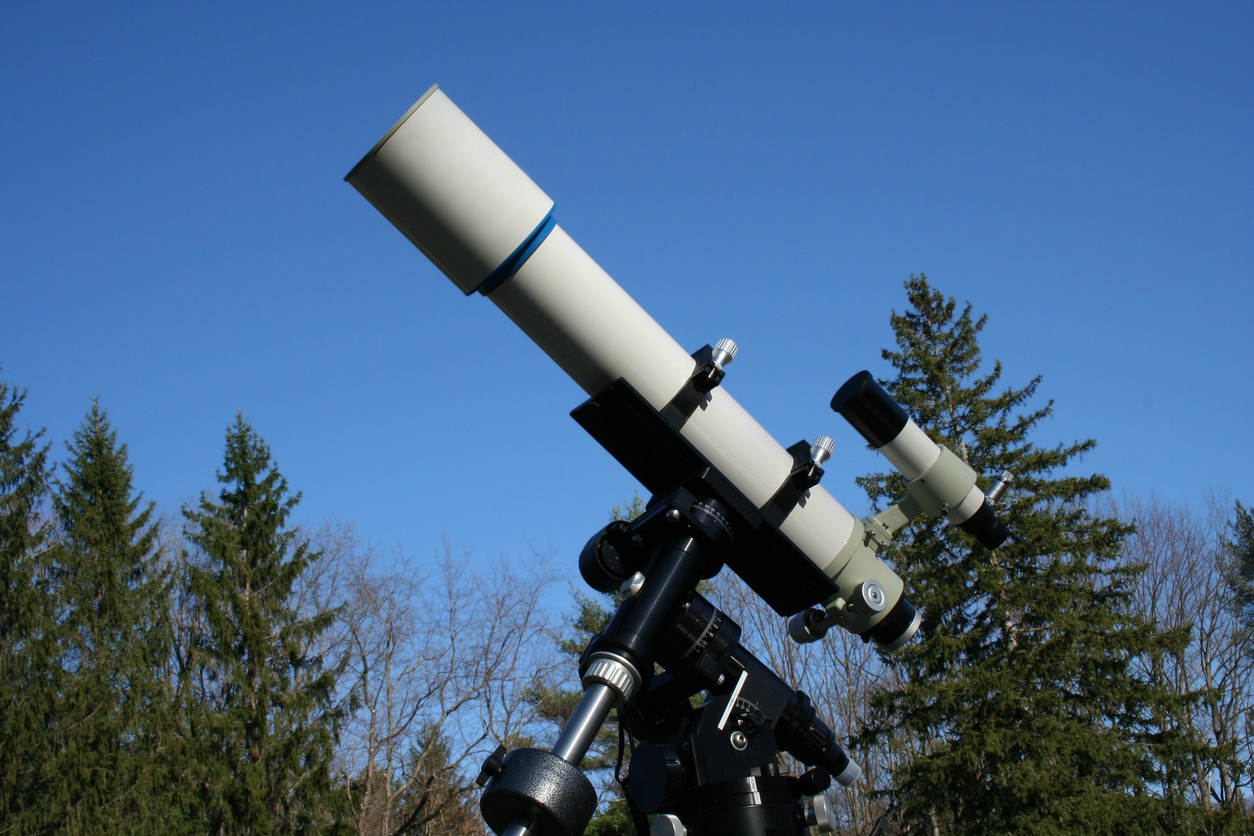Purchasing a telescope is the key first step toward an appreciation for the galaxy (and the wonders present within it). Ideally, you want to buy this optical instrument from a renowned brand—one that helps its customers star-hop into their intended deep-sky target.
There are plenty of popular telescope brands in existence. Thanks to them, you can become a stargazer overnight and, learn the names of the constellations, the brightest stars, and witness the different natures of the sky throughout the seasons.
Today, we will look at one such brand: Carson.
Who is Carson?
Carson is a major telescope manufacturer that aims to make astronomy and stargaze fun for everyone. It has been around for a while and has unified affordability and choice for different people. Whether you are a camper, builder, hiker, student, or hunter, they have a product for you. No matter the industry, Carson wants to help you invest in your passion.
Compared to Chinese telescope makers, Carson produces high-quality telescopes made directly in its US factories. The company is dedicated to transparency and customer service regarding the capabilities and specifications of its telescopes. All the telescopes in its catalog endure rigorous experiments to ensure they work as intended. The Carson promise is always to deliver you the best telescopes and other optical devices, plus the best customer experience.
The Carson Catalog
Manufacturers like Carson manufacture telescopes in various styles. The best part is there’s an option for everyone—you can choose from compound, reflector, or refractor telescopes to begin your astronomy adventure. Below, we explain each of these types in more detail.
Refractor Telescopes
If you want a simple and common telescope, there’s no better option than a refractor model. Carson and many other telescope brands stock this telescope type. The telescope features a solid, long tube mounted on a tripod. The far end of the device (called aperture) has a refractor lens that takes the light and flips it while keeping its direction. The lens aligns with a viewport that positions the image for viewing at the telescope’s opposite end.
If you are new to stargazing, a refractor telescope is a good first device to use. The simple design of these telescopes makes them affordable and easy to maneuver. You will also find them simple to set up and carry out, courtesy of the lightweight materials used to build them. Moreover, the lenses of refractor telescopes require minimal maintenance (occasional cleaning is all you need) and are less prone to alignment issues.
The SkySeeker 40x from Carson is a great choice if you’re looking for a refractor telescope for your new hobby. It’s very easy to use and great for viewing the moon. Users can also spot the rings of Saturn and get a decent view of Jupiter with this optical device. The telescope comes with 40x-100x magnification and a 60mm aperture. Plus, you get a 5x24mm Finder Scope and an 800mm focal length. Accessories like H20, H8 eyepieces and an adjustable aluminum tripod are also present in the package.
Reflector Telescopes
Reflector telescopes are different than their refactor counterparts. In a reflector telescope, the body has a shorter length and a much thicker base. Besides the appearance, reflector telescopes operate differently, too. You’ll find an open port on these telescopes that enables the light to enter rather than a lens at the aperture end.
Plus, there is a mirror or a series of mirrors at the far end that reflects light to a “viewing port partway” along the telescope’s body. The viewing lens helps translate the light, building the actual image. The alignment of the mirrors and the viewing lens helps make the image clearer.
Although reflector telescope models require a little more knowledge on the operator’s end, they’re still easy enough to use by beginners. That said, you’ll need some practice to make the most of these telescopes. Keep in mind that the telescope body and mirrors may require some maintenance (the open nature of the telescope makes it prone to debris and dirt, especially when you use it outdoors).
One of Carson’s best reflector telescopes is the SkySeeker Newtonain. This telescope comes with a Dobsonian mount, so you can place it on a table or elsewhere to start viewing the galaxy. It also has a unique color—metallic blue—which is rare to find in most telescopes. You can use it immediately after taking it out of the box—no assembly is required. Existing users of SkySeeker Newtonian say it produces great images of the planet and moons.
Compound Telescopes
Compound telescopes are a sort of a hybrid when it comes to lenses, combining mirrors and refractor lenses to produce stunning images. However, operating them comes with a bit of a learning curve. The body of a compound telescope is much squatter than other telescope models, and the height is also short, which enables a table mount. The aperture end features a refractor lens that feeds the light to the far-end mirrors, reflecting the viewing port.
The lens alignment is highly critical here and takes a lot of practice to get right. But mastering the alignment can make the investment in a compound scope worth it—the device can produce some breathtaking and deep images of the galaxy. Because compound telescopes aren’t high on portability, it’s best to put them on the balcony or backyard for gazing at the skies.
You might think that compound telescopes may not produce great images since they aren’t the biggest. Well, think again because Carson and other companies have equipped them with features that provide detail when viewing the Rings of Saturn or the moons of Jupiter.
Factors to consider before investing in Carson
1. What objects do I want to see?
The objects a telescope can render depend on its specs. The key aspects to consider are the focal length and aperture size. The front end of the telescope features the aperture, which enables the light to come in. The distance between this aperture and the viewing port is called the focal length (it defines the distance the optical device can reach).
With a bigger aperture, you can easily observe constellations or whole areas of space. And with a vast focal length, you can reach the farthest depths of the galaxy with the naked eye.
2. Where will I place the telescope?
One thing to keep top of mind while researching telescopes is the location where you will use them. The environment will determine the right telescope for you. For instance, a reflector telescope is a good option for stargazing from the backyard. That said, you will have more flexibility to choose from a range of models with a bigger space at hand.
Carson and other telescope brands make compact devices you can easily table mount or put in the corner of your room. You can also look into compound models if you want to experience the galaxy from your room. Try to keep things light and avoid bulkier telescopes for a smooth experience.
3. How much can I afford to spend?
Starting any hobby requires a bit of investment; the same applies to astronomy. Carson has some mid-range telescopes that would set you back just a few hundred. It’s always good to invest in affordable equipment as a beginner and upgrade as you become experienced. Plus, this strategy enables you to minimize your risk should you decide to pivot from astronomy down the road.
Because Carson offers many types of telescopes, finding something suitable for your hobby won’t be a problem. Keep the factors we’ve discussed in mind while shopping for a Carson telescope. With some planning and information, you can buy something that gives you value for money over a long period.
Conclusion
There you have it—everything you need to know about the Carson brand and its range of telescope offerings. As you can see, the company has a range of feature-rich yet affordable telescopes that makes it a great choice for anyone from beginners to pros. Whether you have discovered a newfound passion for astronomy or want to impress your science club mates with a telescope, Carson has your back. Use the tips above to find the best telescope for you and watch the wonders of the galaxy from the comfort of your home.

